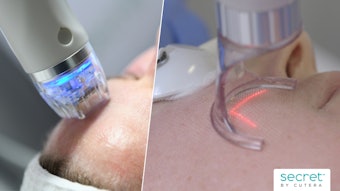
Laser therapy stands for light amplification by stimulated emission of radiation and is a type of medical therapy that was introduced in 1963 by Leon Goldman, known as the “father of lasers in medicine.” Laser therapy utilized the quantum theory of radiation and was first reported in the literature when studying the removal of darkly pigmented cutaneous structures.1 Since then, the development of laser technology has advanced and the understanding of its interactions with various skin types has become of great importance, allowing for a wide range of skin types to have access to effective treatment for skin of color-specific concerns. This article will cover the scientific principles of lasers, the mechanism of how lasers interact with skin and how it differs in skin of color, ablative and non-ablative lasers, potential complications from ablative lasers in skin of color and recent laser therapies for skin of color.
How Lasers Interact With Skin
Generally, the principle mechanism of a laser when utilized for skin rejuvenation relies on selective photothermolysis, which is selective and specific destruction of target components in the skin with little damage to neighboring structures. Light energy is absorbed and converted to heat by target structures (chromophores) within the skin. The skin has three main chromophores: (1) water (found within the epidermis and dermis), (2) hemoglobin (found within the microvascular network of the dermis) and (3) melanin. Each chromophore present in the skin has different peak absorption wavelengths of light. Water absorbs light at a peak wavelength of 3,000 nm, hemoglobin absorbs light at peak wavelengths of 418 nm, 524 nm, 577 nm and 1064 nm and melanin absorbs light at a wavelength between 250-1200 nm.
Board-certified dermatologist Chesahna Kindred, MD, MBA practices in Columbia, Maryland, at Kindred Hair & Skin Center — the first dermatology office with a full-service salon specializing in hair loss. She grew up in South Central Los Angeles, earned her BS with a minor in Spanish at the University of Southern California, was the third person in the history of the University of Cincinnati to earn an MD/MBA degree, and later completed dermatology training at Howard University Department of Dermatology. Dr. Kindred is the immediate past chair of the dermatology section of the National Medical Association and founder and president of Onyx Medical Society.
Kaelynn Workman, B.S., is a rising fourth-year medical student at Case Western Reserve University School of Medicine in Cleveland, OH. Kaelynn has a passion for dermatology, specifically disorders of the scalp and hair along with skin of color. She will be applying for dermatology residency in the fall of 2024. Kaelynn has completed a research fellowship in hair disorders at the Cleveland Clinic under Dr. Wilma Bergfeld from 2022-2023 and completed her undergraduate studies at Cornell University with a major in Biological sciences and a double minor in Inequality Studies and Health policy. Kaelynn hopes to advance the field of dermatology for minoritized patient populations and patients with skin of color.











